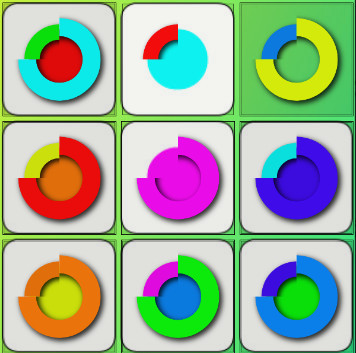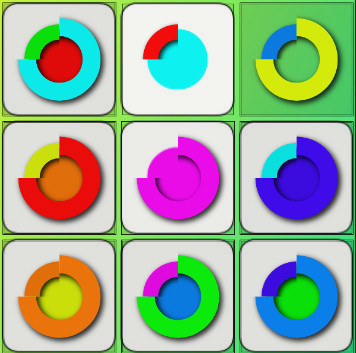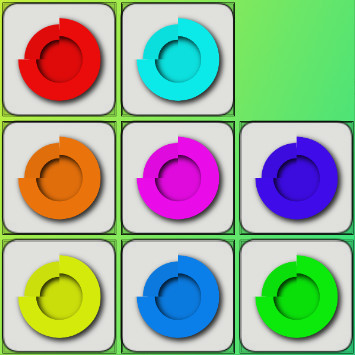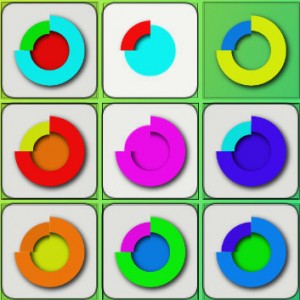The ‘Overlapped-8‘ brain teaser is a pretty singular puzzle game. It consists of two layers, each having a classical sliding block pieces (SBP) puzzle. Objective? It is also simple: to move pieces around until colors of pieces match at the same position on both layers.
Solving it…let’s see how!

The mechanics is simple: each layer has one free cell where you can move an adjacent piece in the same layer. Keep moving pieces (dragging them) until the puzzle is solved!
There are several famous sliding blocks puzzles. One of them is the klotski puzzle: a 5×4 grid with planar blocks of different shapes, and with a simple objective: to move the big square to a concrete position. But you still can get a good puzzle with a pretty naive design: the 15-puzzle. This puzzle was popularize by Sam Lloyd because he proposed to solve an impossible version of it. There are other versions of this puzzle, for example, the 8-puzzle is a 3×3 board with 8 pieces and one ‘hole’ or free cell. The objective is to arrange the pieces, usually forming an image or an ordered set of numbers.
Returning to Overlapped-8, this puzzle is like having two 8-puzzles, one on top of the other. So one direct approach to solve it could be to solve first the bottom puzzle, and then solve the top SBP. Nothing more than solving a classical SBP, but with the additional work of setting aside top layer’s pieces in order to move pieces at bottom.

This process works because there is no locking mechanism between the two layers, so pieces can move freely (as long as you can reach them by moving top layer’s pieces). Then, if you go on with this algorithm, you end up solving the puzzle:

How this puzzle could be a little more complex and compelling? Well, there are many possibilities. One of the most promising would be to use new piece shapes, like 1×2 and 2×1 rectangles. This can incredible increment the brain teaser’s difficulty. You can see a rather simple puzzle that implements this idea: Overlapping 16 puzzle. It is fairly easy because it is only a 3×3 board. We are working at puzzlopia to bring to you new challenging brain teasers like these.
Stay tuned!
Edgar Güeto, founder of puzzlopia

